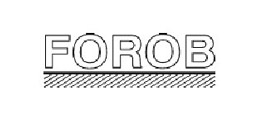FOROB II
BAVARIAN JOINT RESEARCH PROGRAM FOR SURFACE TECHNOLOGY

II. 2 Optimisation of the fiber/matrix interface in fiber reinforced composite by CVD coating of carbon short fibers
Carbon fiber reinforced composites with ceramic (CMC), carbon (CFC) or metal (MMC) matrix are interesting materials for new applications, e.g. in the field of automotive industry. Main reason for this is a remarkable weight reduction up to 50% for particular components combined with the excellent mechanical properties of the composite materials. The advantages of the carbon short fibers are not only their low costs but also their economic processing methods in contrary to long fiber processing. Using short fibers, the composites can be manufactured by conventional production methods like hot pressing, injection moulding or extrusion. Carbon fibers can act as an optimal reinforcement material only, if during manufacturing and the operation of the composites so called fiber-matrix-reactions at the interface are avoided. Therefore thin ceramic layers are deposited on the surface of the fibers with CVD technique. Using a suitable fiber coating for each type of matrix, the fiber-matrix interface can be optimized to generate a fiber-pull-out effect, leading to a damage tolerant behavior of the composite. Within the scope of this project, carbon short fibers (C-short fibers) with different length (3 – 12 mm) are coated with thin ceramic layers of pyrolytic carbon (pyC), boron nitride (BN), titanium nitride (TiN) or with pyC/TiN and pyC/BN double layers by CVD/CVI techniques. These fibers will be used as reinforcing components in composite materials with metallic, ceramic or carbon matrix. Possible applications of these materials are high-temperature insulation materials (C/SiC), high-performance brake discs (CMC), pump and compressor parts (CMC) and for motor part reinforcement (MMC).



